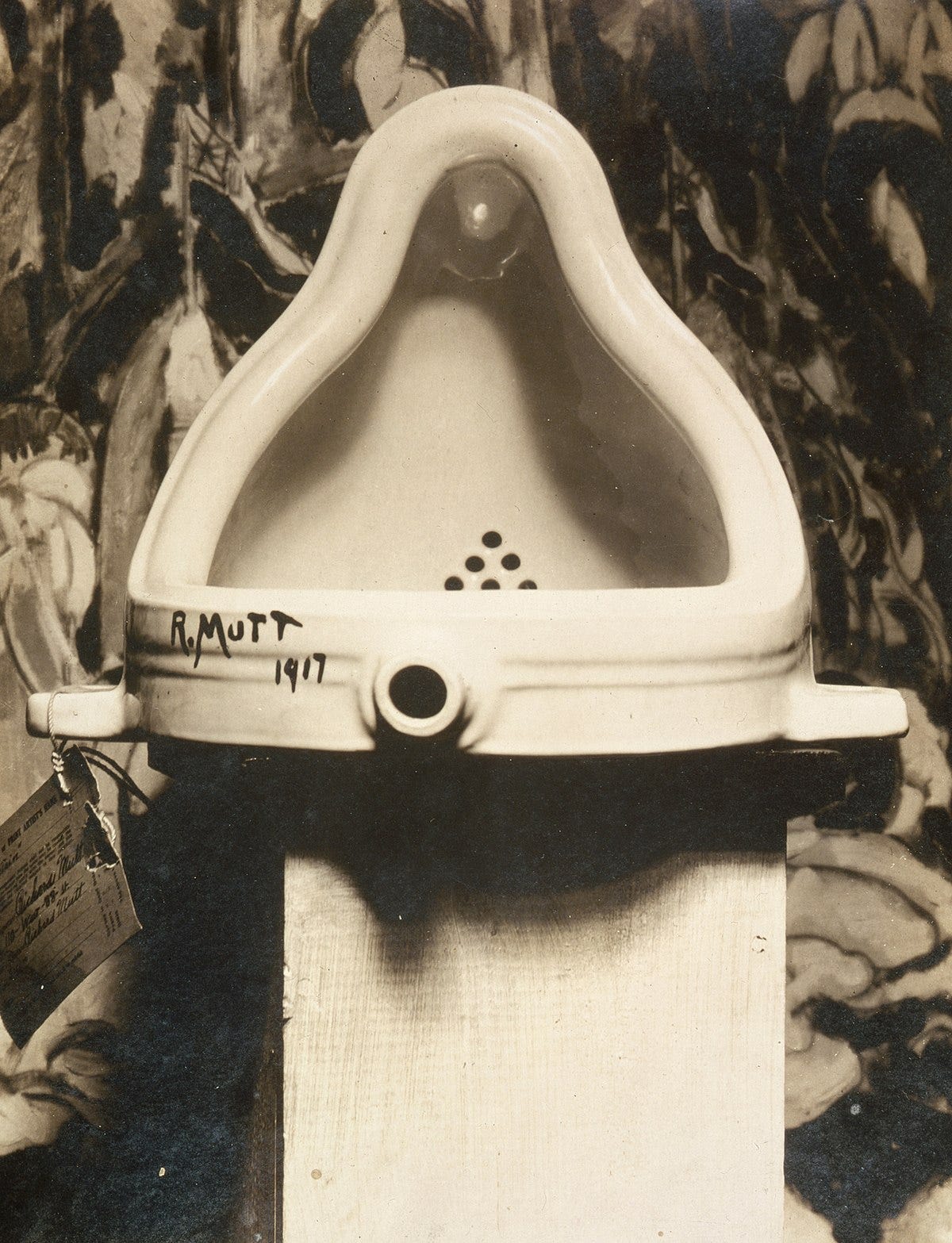Showgirls is a Dada Masterpiece
Marcel Duchamp's urinal was the precursor to the so-bad-it's-transcendent film.
One of my favorite, time-honored summer traditions are the film screenings organized by Cinespia at Hollywood Forever Cemetery – Los Angeles’s answer to Père Lachaise. For decades, Angelenos have gathered picnic style on the great Fairbanks lawn at the graveyard to watch films, which are projected on the side of a mausoleum. It’s strange, macabre, and very, very Hollywood. Oftentimes, someone involved in that night’s showing will introduce it, to the great delight of the crowd.
It was in this setting that I witnessed cinema history in 2015.
I’d dragged a friend of mine (hi, Maya!) to see one of my favorite movies – the 1995 cult classic and box-office bomb Showgirls – which, coincidentally, was scheduled to coincide with LA Pride week. In many ways, the film owes its cult status to the fact that it was embraced whole-heartedly by the queer community, who near instantly took to its campy fun. As such, the cemetery was populated with a rowdy crowd of girls, gays, and theys. The mood was further buoyed by the Supreme Court ruling announced the day prior, which granted same-sex couples the right to marry.
And then, something truly extraordinary happened: Elizabeth Berkeley came out to introduce the film. It was the first time she’d publicly acknowledged the so-bad-it’s-sublime piece of cinema that destroyed her career; as the film’s star, her portrayal of its heroine Nomi Malone was deemed so over-the-top, salacious, and downright awful that she never regained her foothold as a serious actress after its release. (Her co-stars Gina Gershon and Kyle MacLachlan, though forever solidified in the annals of camp history, were still able to maintain healthy acting careers).
In the near-decade since that moment – and almost thirty years since its release – finding pleasure in what was once considered to be the worst film ever made has become less of a controversial stance. Showgirls has been embraced by scholars and cultural connoisseurs alike (such as myself), and been the subject of documentaries, academic writing, and reconsidered under a more modern, feminist, and queer-friendly lens.
I’ve evangelized Showgirls to several friends over the years, including one who is an acclaimed actor. (Hi, creature!) When she called to tell me she finally watched it, I asked her a question that had been on my mind for ages – what on earth has to happen on set for a film to end up this bad? Part of the entertainment of Showgirls comes from the impression the viewer gets that each actor is playing in a different genre – Berkeley is in a gritty drama while Gershon plays up the high camp. “Honestly, Chloë,” she said, “It really just comes down to the director.”
Which is how I’ve come to the conclusion that, with Showgirls, Paul Verhoeven was perhaps operating on a Duchampian level of Dada genius.
The Dada art movement, born in Switzerland and Germany but quickly adopted in the United States and France, emerged in 1915. It was the parent of Surrealism, whose 1924 birthdate is commonly accepted as being the end date of Dada, as they certainly blended together. Dada’s core values as an art movement, in many ways, were later refined and expanded upon by the Surrealists, but Dada’s brilliance lay in its various simplicities.
As a reaction to the circumstances surrounding WWI, Dada is known for its anti-capitalist, borderline nihilistic bent. Dada art often played with notions of the absurd; rejections of logic and reason; and emphasis on irrationality. The most iconic piece of art to emerge from this period was Marcel Duchamp’s “Fountain,” which was an everyday porcelain urinal. One of a series of ‘readymades,’ also known as pieces of art which really were simply everyday objects that, by the process of being chosen by the artist, became art, it remains emblematic of the Dada movement in its absurdity – and transcendence.
In the same way that Duchamp elevated a urinal to the position of high art, so too did Verhoeven elevate the story of a sex worker’s showbiz ambitions.






